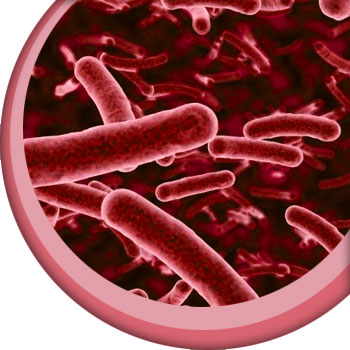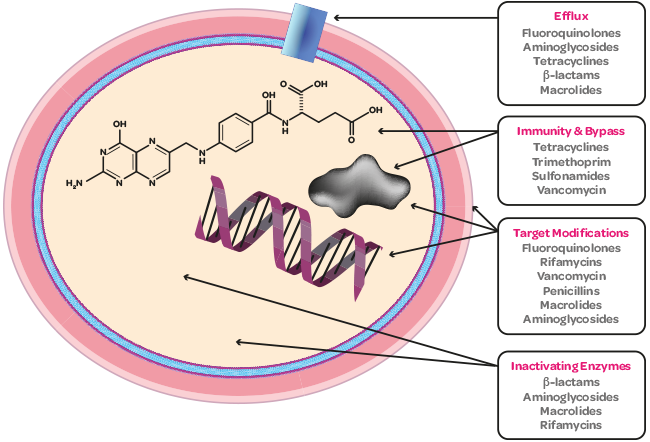
Mechanisms of
Antimicrobial Resistance

Decreased uptake
Alterations in the permeability of the outer membrane may prevent some antimicrobials from entering the cell. For example chromosomal mutations in Gram-negative organisms may alter the expression of porins in the cell membrane causing decreased entry of fluoroquinolones.51
Altered target site
A genetic mutation or an enzymatic modification may alter the protein structure of the site used by the antimicrobial to exert its effect. Resistance to macrolides and lincosamides can be conferred by methylation of their target site,52 and mutations in DNA gyrase confer resistance to fluoroquinolones.53
Enzymatic inactivation or modification of antimicrobial
For example, beta-lactamase produced by Gram-negative bacteria hydrolyses the beta-lactam ring of penicillins and cephalosporins,54 and aminoglycoside-modifying enzymes (AMEs) can phosphorylate aminoglycosides, therefore preventing them binding to their target site.55
Efflux of antimicrobial
For example, the efflux of tetracyclines by both Gram-negative and Gram-positive bacteria. In this case genes on a plasmid code for proteins in the cell membrane which allow energy-dependent efflux of the antimicrobial.56 Efflux pumps providing resistance to macrolides, tetracyclines and fluoroquinolones are reported in Staphylococcus aureus,57 and many Gram-negative bacteria have chromosomally encoded multidrug efflux pumps such as the AcrAB-TolC system in Enterobacteriaceae.51
Bypass pathways
The bacteria become able to produce an alternative form of a protein that has low affinity for the antimicrobial. For example, there is a plasmid-encoded dihydrofolate reductase with very little affinity for trimethoprim.58
Disclaimer: Indications and doses may vary between products. The antimicrobials listed may constitute an off licence use of the product and as such should only be used according to the ‘Cascade’, further details of which are available on the RCVS, VMD and NOAH websites. Veterinary surgeons are advised to carefully check the Summary of Product Characteristics (SPC) before prescribing a product and obtain informed owner consent where required.

